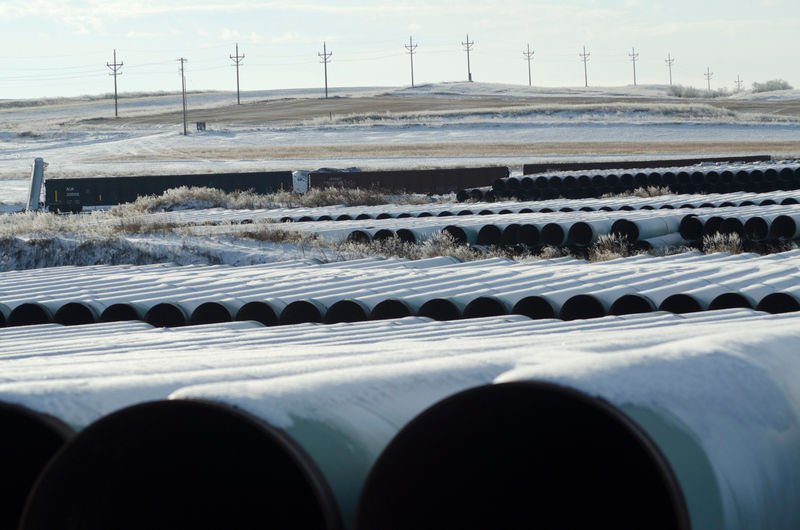By Ethan Lou
CALGARY, Alberta, March 20 (Reuters) - Transcanada Corp's TRP.TO move to lower tolls for its Mainline pipe raises the competitiveness of Canadian natural gas for the near future, but access to Asian markets is the key to the long-term survival of the landlocked industry, industry insiders say.
Canada's C$45-billion ($34 billion) gas industry relies solely on North American demand and domestic producers have been increasingly squeezed from the lucrative eastern market by U.S. rivals who have lower transportation costs.
TransCanada said last week it will seek regulatory approval for a discount in tolls of nearly 50 percent for western Canadian producers to use the Mainline to send their output to markets in the east, a move that had broad industry support. the North American market will get crowded in the near future, with flat demand and increasing U.S. output, according to a report released on Monday by the Conference Board of Canada think tank. It painted a bleak outlook for the industry, projecting U.S. output to eat into Canadian market share.
The think-tank warns that U.S. pipelines including Energy Transfer Partners LP's ETP.N Rover that target the same areas Mainline serves does not bode well for Canadian gas.
"This is a worrisome development for Canadian producers," according to the report.
Even with the Mainline, Canadian producers, whose product trades at a discount, still need to look to new markets in Asia, industry executives said.
Canadian Natural Resources Ltd CNQ.TO , which will be a shipper on the Mainline, said while the lower toll is a "positive step," the company still supports accessing new markets.
TransCanada's Mainline "is kind of the last pipe we have that has unutilized space," said Stuart Mueller, manager of natural gas transportation and supply at the Canadian Association of Petroleum industry lobby group.
According to the Natural Energy Board regulator, the Mainline can move about 3.6 million to 6.9 million gigajoules of gas per day on different parts of the system, but utilization rate has been 60 percent at most.
While North American demand exists, further growth for Canadian producers will need to come via accessing the offshore market through liquefied natural gas, Mueller said.
Natural gas is usually turned into liquid at special terminals when shipped across oceans. Canada has about 20 such terminals proposed, most of them on the west coast with the Asian market in mind, but none are built yet.
If just "several strategic terminals" get built, Canada can become a "cost-competitive, secure and stable supplier" of gas globally, according to a 2016 internal government memo seen by Reuters under access-to-information laws.
The Natural Resources Canada federal department said in a statement declining exports to the United States highlights the need for LNG terminals, even with lower Mainline tolls.
LNG terminals coming online may not bode well for future shipping on TransCanada's Mainline, said Dulles Wang, analyst at Wood Mackenzie.
Mainline's terms allow shippers to exit after five years on the condition they pay higher tolls for two years before doing so.
"If we are able to secure the Asian markets in the next five to 10 years, then we might see some contracting just being canceled," Wang said.
TransCanada spokesman Shawn Howard said in a statement the export terminals do not diminish the need to serve the North American market.
($1 = 1.3361 Canadian dollars)
